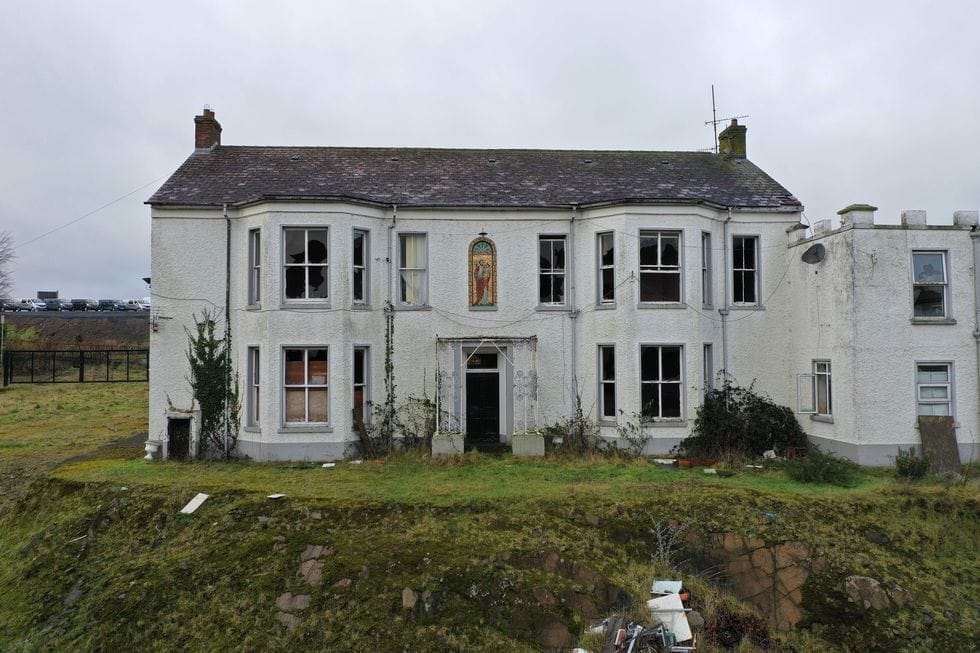Ruth Wilson stars in this new BBC One drama, which is based on the harrowing history of the Magdalene Laundries.
WORDS BY CLARA STRUNCK.
The end of summer has arrived, which means it’s the perfect time to relax on the sofa and binge-watch a new TV drama. Happily, a new series has arrived that fits the bill: The Woman in the Wall, starring Ruth Wilson.
A suspense-laden, psychological thriller set in the fictional village of Kilkinure in Ireland, this BBC One show tells the story of Lorna Brady (Wilson), a chronic sleepwalker who wakes up one morning to find a dead body in her house. She has no idea who the woman is, or even of her own culpability. When a priest is found murdered in Dublin, and his car is discovered just outside Lorna’s home town, she becomes involved in the case investigated by detective Colman Akande (played by Daryl McCormack).
The characters in the show may be fictional, but they’re inspired by the shocking history of the Magdalene Laundries. Here’s everything you need to know about the real-life story behind The Woman in the Wall…
What were the Magdelene Laundries?
The series takes inspiration from the Magdalene Laundries in Ireland, initially Protestant but later mainly Roman Catholic institutions that operated from the 18th to the late 20th centuries to house ‘fallen women’ (in other words, prostitutes, young women who became pregnant out of wedlock, or those without family support). However, some women were sent to the laundries for little reason at all: in The Woman in the Wall, one former resident explains that her friend was imprisoned because “she was a great beauty” who people feared would have sex with married men. “She never even had a boyfriend.”
In the show, Lorna is sent to her local laundry for getting pregnant at 15; her baby is taken from her by nuns, and she never finds out what has happened to her child. Her sleepwalking is a result of the trauma generated by her experiences. This was a common practice in the laundries; while preparing for her role, Wilson told the BBC she was “shocked” by the treatment that young women received. “They’d have to nurse their child for two years, and then their child was taken away from them,” she said. “Stuff like that is horrific; the fact that girls weren’t given any gas and air, or weren’t stitched up after birth… it’s pure horror.”
How did the Magdalene Laundries operate?
Named after the Biblical figure Mary Magdalene (in earlier centuries shown as a reformed prostitute), the first was founded in the mid-1700s in Whitechapel, London. Many of the laundries – which operated throughout the UK, as well as in other countries across the world – were like workhouses, with regimes as strict as those found in prison. Common tasks included domestic chores like scrubbing the floors and commercial laundry (giving the institutions their name), alongside a rigorous programme of silence and prayer.
The laundries operated on a for-profit basis, but the women received no pay and no education. The average entry age of women in the laundries was 23, but some reports state that the youngest ever inmate was just nine years old.

In Ireland, laundries particularly flourished: the government claimed that the State was not legally responsible for any abuse, as these were religious institutions. An estimated 30,000 women are believed to have been imprisoned in Irish laundries during the 19th and 20th centuries, and the last laundry – in Waterford, in the south-east – closed only in 1996.
Conditions were appalling: once inside, women were imprisoned behind locked doors, usually with no information about when (or even whether) they would be set free. Their names were often changed, and they were given an identification number, as well as a drab uniform and a brutal hair cut. A rule of silence was enforced at almost all times, and friendships were usually forbidden. Visits by family and friends were not encouraged, and were monitored by nuns when they did happen.
Punishments for refusing to work included everything from meal deprivation and solitary confinement, to physical abuse and humiliating rituals.
Have the Magdelene Laundries been in the news before?
The institutions were engulfed in scandal in 1993, when the Sisters of Our Lady of Charity sold a former laundry in Dublin to a property developer. After the sale, the developers discovered a mass grave of 155 women, some of whom hadn’t been officially declared dead.
A number of campaigns and remembrance services have been undertaken to request the names and reburial of those buried in mass graves. Since 2001, the Irish government has acknowledged that the women of the laundries were victims of abuse. On 19 February 2013, the Taoiseach Enda Kenny issued a formal state apology, calling the laundries “the nation’s shame”, and saying “the government and our citizens deeply regret and apologise unreservedly to all those women for the hurt that was done to them, and for any stigma they suffered”.

The singer Sinead O’Connor, who died earlier this year, spoke of her mistreatment as a teenager in one of the laundries DAVID CORIO//GETTY IMAGES
The laundries made headlines earlier this year, after the death of singer Sinead O’Connor, who spent one year in a laundry when she was 14. “It was a prison. We didn’t see our families, we were locked in, cut off from life, deprived of a normal childhood,” she said. “We were told we were there because we were bad people. Some of the girls had been raped at home and not believed. One girl was in because she had a bad hip and her family didn’t know what to do with her… As a punishment, I would be sent up to bed early to go to sleep with the dying old Magdalene ladies. There would be about six of them in the room and me and I was terrified.”
This new series is not the first to document the horrors of the laundries. Popular 2013 film Philomena, starring Judi Dench, is based on the true story of Philomena Lee, who was forced to give up her son and sent to a laundry; later, she embarks on a search to find him.
How can I watch The Woman in the Wall?
The first episode of the drama premiered on BBC One on 27 August at 9 pm, with the second instalment airing the next day. The six-part show will run weekly and is also available to stream on BBC iPlayer.
__________________________________________________________________________
This story first appeared on harpersbazaar.com/uk



